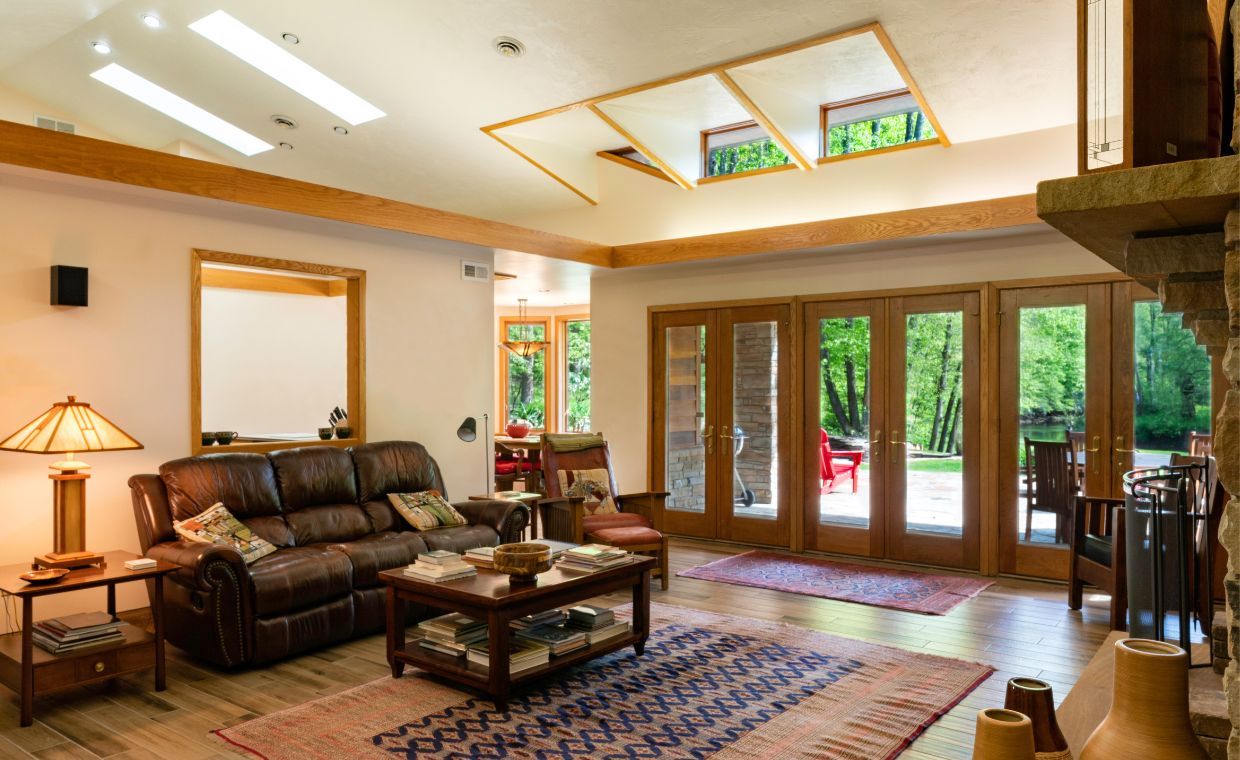
The history of architecture dates back to about 10,000 years ago when humans first started building shelters to safeguard themselves. Ever since, architecture has evolved with civilizations, periods, and regions over time. It has acted as a powerful tool in creating great civilizations such as the Mesopotamian, Egyptian, Greek, Roman, Harappan, and a lot more.
In the Indian context, architecture has a history that amalgamates richness and diversity. From the well-planned Harappan Civilization to the rock-cut structural gems, India has been home to many marvels. With the evolution of architectural styles in the nation, temples, Indo-Islamic monuments, and modern British Architecture came into being.
Even today, architecture is an elite profession among the masses. The field is synonymous with the fusion of technology and creativity.
With such an intriguing history inundated with wonderful characters, the world of architecture encompasses a myriad of surprising facts. From Sagrada Familia to the 9/11 attack, there are bits of architecture hidden in many such stories. We have put together a list of many such architecture-related facts for you to delve into.
Below are some interesting facts about architecture that may surprise you.
01. Architecture Used to Be an Olympic Sport

One of the most interesting facts about architecture is that it was once an Olympic sport. Surprised by this architecture-related fact? Yes, you read it right! This fraternity of creativity and curiosity was once an Olympic sport.
When the modern Olympics first came into being, approximately 151 medals were awarded across creative fields, such as painting, literature, music, sculpture, and architecture.
The first-ever architecture competition took place at the Stockholm Games in 1912. Eugene Edouard Monod and Alphonse Laverriere were the first ones to bag a gold medal in architecture for a town planning project about a Modern Stadium.
But this practice came to an end in 1949. The International Olympic Committee stated that artists were professionals in their fields and that their participation would not be fair considering that the games were for amateurs.
02. Fun Facts About Sagrada Familia Architecture

This architectural wonder is one of the most popular tourist spots in Barcelona, Spain. But apart from its intriguing architectural details, it has a list of facts that add to its speciality.
Sagrada Familia is one of the tallest religious buildings in Europe. It is also a UNESCO World Heritage Site. Even though the construction of this structure started in 1882, it is still incomplete.
If this isn’t enough architecture-related facts, brace yourself for more! The genius behind this masterpiece, Antoni Gaudi drew inspiration from Mother Nature to curate the designs.
The faces of all the builders who worked tirelessly on the project have been engraved in stone here as a mark of respect. Antoni Gaudi, too, was laid to rest in the same building, in a tomb on the underground level of the Sagrada Familia.
03. An Architect Was A Part Of The 9/11 Attack

Can there be an architecture-related fact connected to the infamous 9/11 attacks? Mohammad Atta was one of the prime perpetrators of the terrorist attack that reduced the World Trade Centre to rubble.
He hijacked American Airlines Flight 11 and was the first to crash it into the North Tower of the building. The deaths, injuries, and damages incurred as a result of this attack are known to the world.
But, did you know that Mohammad Atta was an architect? Yes, this mastermind behind the 9/11 attacks held a degree in architectural engineering from Cairo University. He was one of the highest-scoring students and also had a degree in Urban Planning. Atta believed that the construction of high-rise structures in Middle Eastern Cities was an exploitation of their authentic character, which happened as a result of the adaptation of Western ideologies.
04. Most Famous Architects Don’t Even Have A Professional Degree

If you are wondering if this could be true, keep reading! It is a fact that you will need a degree to make a career or excel in any given field. But, the fact that we are going to reveal will shock you.
Academically, architecture can be one of the most difficult courses to study. But some legends in this field do not have an architectural degree at all!
Well, the exemplary works of these people have told us otherwise. While an authentic degree in architecture might be necessary for you to become an architect officially, you do not need one to design wonders.
Famous architects like Frank Llyod Wright, Louis Sullivan, Le Corbusier, Mies van der Rohe, Buckminster Fuller, Carlo Scarpa, and Tadao Ando have designed impeccable structures amalgamated with creativity and perfection. However, the surprising fact is they do not have a degree in architecture.
05. Math Is No More Required To Pursue Architecture

Math is a subject that has troubled most of us during our school lives. It has also been a mandatory subject to pursue architecture. For those who have a knack for creative expression but cannot handle the complexity of math, you are not alone.
An interesting fact about architecture is that Math is no longer mandatory to pursue architecture. As stated in the approval process handbook 2022-2023 released by the All India Council for Technical Education, Physics, Math and Chemistry no longer stand as mandatory subjects for admission in architectural courses.
So, all those who were interested in pursuing architecture but could not take it forward because of their fear of math can now look forward to taking admission in the course of their choice. It seems like a solution where everyone benefits, right?
06. LEGO Used To Design Special Bricks For Architects

All of us recall playing architects when we were tiny tots as we made buildings out of LEGO bricks. Well, the association of LEGO with architecture is stronger than we know. Let’s know more by delving into this architecture-related fact.
In 1963, LEGO launched Modulex bricks, a special line of products curated only for architects. According to the blog posted by ‘Design, Management & Professional Services LLP,’ (Lego Bricks For Architects), the Modulex Bricks were 5/8 the size of a standard brick and had a width-to-height ratio of 5:6.
The other products in this range included roofing connector elements, special slopes, windows, and doors. However, LEGO discontinued Modulex in the 1970s.
07. The Aurora Ice Hotel In Alaska Was Made Entirely Of Ice

As kids, we have all tried our hands at creating little architectural wonders. From structures made of ice cubes to castles made of sand, all have been integral parts of our childhood memories. But as we grew up, practicality seeped in, and the rest is history.
But can you imagine a real hotel made of ice? Well, this idea is practical and possible. The Aurora Ice Hotel in Alaska is one such architectural marvel built completely out of ice. Let’s know more about this architecture-related fact.
Built in 2005, the structure used almost 1,000 tonnes of ice and snow. If you are wondering about the science behind this, we have you sorted. The structure puts geothermal energy to use to maintain the temperature at 25 degrees Fahrenheit, which keeps it cool all year long. The Hotel has ice crystal chandeliers inside that showcase a beautiful depiction of the northern lights. Such facts on architecture are interesting to know.
08. The Sims Was Originally Developed As An Architecture Simulator

Have you ever come across the term Sims? Well, it is a popular name among video game enthusiasts. Electronic Arts published this single-player interactive life simulator game.
The co-founder of Maxis, a division of Electronic Arts, was keenly interested in architecture, which led him to design a series of popular games, SimCity being the first one.
The game allowed people to create their own “neighbourhood space” and orchestrate the daily life activities of the constituent characters called “The Sims”. The game gained a lot of popularity and won numerous awards.
09. Three Famous Architectural Blunders That Will Surprise You

01. Leaning Tower of Pisa
This architectural masterpiece, located in the Italian city of Pisa, is famous for its unintended tilt to one side. But do you know what architectural facts account for this tilt?
The foundation of this structure stands on soil that encompasses fractions of sand, clay, and silt in a proportion that results in a depreciative soil-bearing capacity. This soil does not possess the required strength to bear the load of such a heavy structure. Due to these reasons, the leaning tower seems tilted on one side.
02. Tacoma Narrows Bridge in Washington
Built in 1940, the Tacoma Narrows Bridge was an architectural marvel until its failure just four months after its construction. Are you wondering what made this happen? Let’s unveil more of this architecture-related fact.
Well, this twin suspension bridge failed due to aeroelastic flutter. In a typical bridge design, the wind is allowed to pass through by imbibing trusses in the structure. Unlike this, the Tacoma Narrows Bridge forced the winds to move above and below the bridge. This led to flow separation, which in turn caused the structure to collapse and fall into the river.
03. The Lotus Riverside
This 13-story apartment block located in Shanghai, China, perfectly describes how not to build a high-rise. The fatal failure of this structure led to massive losses, including the death of a worker on the site.
The soil removed from beneath the building to build a garage was dumped on adjacent land. The weight of this soil caused the riverbank to collapse. This, in turn, led to the movement of water in the foundation of the Lotus Riverside, causing the structure to fail.
10. Zaha Hadid Was Known For Designs That Didn’t Incorporate A Right Angle

Zaha Hadid is a name everyone is fairly acquainted with in the architecture fraternity. Her innovative designs resonated with the philosophy of radical deconstructive design. If you are wondering what makes her exemplary buildings stand out in a sea of modern designs, the answer is a fun architecture-related fact.
Zaha Hadid is known for curating designs that don’t incorporate a right angle. Yes, that’s true. The unparalleled queen of curves believed in playing with the geometry of her buildings. She designed structures that seemed to defy the laws of physics.
Therefore, none of her designs incorporate right angles. Rather, they are fusions of artistic and creative bulges or curves that depict the flow of her design ideologies.
11. Cambodia Houses The Largest Religious Monument In The World

When you read the term religious monument, which nation comes to mind? For the majority of people, the answer would most definitely be India. But do you know there is another nation that is home to the largest religious monument in the World?
Cambodia houses Angkor Wat, the largest religious monument in the world. This monument translates into “City of Temples”. Originally constructed as a Hindu Temple, the structure now serves as a Buddhist Temple Complex. It was constructed in the first half of the 12th century during the reign of Suryavarman II, who had established it as his kingdom’s capital city. It was a representation of the sacred Hindu Mountain, Mount Meru.
Even in the current scenario, Angkor Wat is a structure of utmost importance. You can find it featured on the national flag of Cambodia.
We have also created an infographic, which compiles this article and is easy for you to save. Please click on the link below:
https://gharpedia.com/infographic/facts-on-architecture/
FAQs
01. What Are The Four Unknown Facts About Architecture?
Following are some architecture-related facts you probably didn’t know about:
- The Aurora Ice Hotel, located in Alaska, is completely made out of ice.
- One of the primary perpetrators of the 9/11 attacks, Mohammad Atta, had degrees in architecture and urban planning.
- Architecture used to be an Olympic sport.
- Most famous Architects, like Frank Llyod Wright and Le Corbusier did not even have a degree in architecture.
02. What Are Three Fun Facts About Architecture?
Following are three fun facts about architecture that are likely to surprise you:
- LEGO used to design special bricks called Modulex for architects.
- The Leaning Tower of Pisa gets its name because of its unintended incline towards one side.
- SIM was originally an architectural simulator.
03. Why Is It Called Architecture?
The word architecture comes from the Latin word “architectura” or the Greek word “arkhitekton” The term “arkhi” means chief and “tekton” means builder. Therefore, it translates into a chief builder.
04. Who Was the First Architect?
The name of the first known architect in history is Imhotep. He designed the Stepped Pyramid at Saqqara and became the chief architect for Pharaoh Djoser of the Third Egyptian Dynasty.
Image Courtesy: Image 2, Image 4, Image 5(a), Image 5(b), Image 5(c), Image 5(d), Image 7, Image 8, Image 9, Image 10, Image 11, Image 12
Author Bio
Saili Sawantt – She is an Architect and Interior Designer by profession. Writing is what she treats as her passion. She has worked as an Architectural Writer, Editor, and Journalist for various design as well as digital portals, both national and international. Formerly she has also worked with Godrej Properties Limited (GPL) Design Studio, Mumbai, due to her keen interested in learning about Sustainability and Green buildings. Apart from this, she runs her blog ‘The Reader’s Express’ and is a practicing Architect & Interior Designer.






























